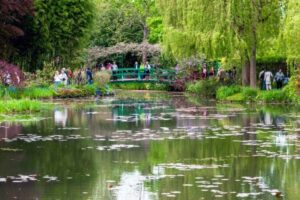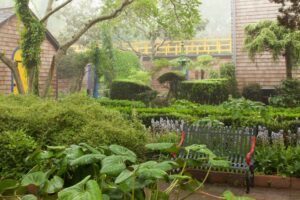The Supreme Court just came out with a ruling that caught the attention of the art world as well as the general press. It involved the appropriation by Andy Warhol of a photo that had been taken by photographer Lynn Goldsmith of the pop star Prince, and it dealt with the problem of “fair use,” an issue that has been brought up often in recent years as technology has made it increasingly easy for a visual artist to “sample” another artist’s work. The problem has been an issue in the music world for years, but the recording industry has long had a system to ensure the payment of royalties.
I was going to write this month’s blog about the ruling, but I’m just not up to it. I refer you to Sarah Cascone’s excellent summation of the issues in Artnet. One of the reasons I’m not up to it is my brain, which looks forward to parsing legal arguments with as much enthusiasm as it does to actually reading the technical manuals that accompany major household appliances. The other reason is that I’m physically tired right now after a day of digging and weeding in the garden.
My activity, however, got me to wondering about artists and their gardens. Not paintings of gardens, mind, but actual gardens that have been created by artists. The most famous example of such a garden in the past 150 years is Claude Monet’s water garden in Giverny.

Monet’s garden, Giverny
Photo courtesy Wikimedia.
Of course, by the time he created his garden, Monet was a world-famous artist and had the funds to employ a crew of workers to do the actual digging, planting, weeding, and so on, but the vision was solely his. The trust that administers the gardens today is committed to ensuring that the thousands of visitors to the garden each year see the same garden that Monet saw. In their view, the garden is an extension of Monet’s art, and it would be as wrong to tamper with it as it would be to “correct” one of his paintings.
I’m not planning to head for France anytime soon, but this summer I do plan to visit a less extravagant but equally personal artist’s garden on the southern shore of Long Island. In 1967 artist Robert Dash (1934-2013) purchased a two-acre plot with an 18th century barn and sheds in Sagaponack and began work on a garden that was as much a manifestation of his aesthetic as any painting he ever did. In fact, he eventually painted only in winter, because he felt that the garden was his summer canvas.
In its early years, Madoo, as Dash came to call his property, was basically a meadow through which Dash would mow paths and place benches where there were good views. Dash did not make the same kind of money that Monet did (the record price for one of his paintings at auction, set five years ago, is $11,250), and I suspect that he had to do most of the grunt work in the garden himself. He cut costs whenever he could, using unconventional materials such as discs sawed from telephone poles as pavers.
The study of gardening literature and a friendship with a noted English garden designer, however, eventually influenced Dash to develop more traditional plantings. In a 1974 interview, Dash said that gardening and painting were quite similar. “It illustrates — the same thing with painting — the unlimited possibilities in a small area, because the garden is very small. I mean, you can stunningly create the new composition by just slight movement or clipping, the same way you do in painting, wipe out, and so forth.

Robert Dash, late 1960’s.
Photo courtesy the Madoo Conservancy, Inc.
From recent photos, it looks lovely, but it’s not the same garden that Dash left at his death. In his instructions to the Madoo Conservancy, which he set up to administer the property after he was gone, Dash insisted, “I don’t want to inhibit or prohibit or fix this garden in amber; it must remain vital.”

Photo courtesy the Madoo Conservancy, Inc.
Such thinking is at odds with the philosophy of art museums, curators, and conservators. Their mission is to preserve an art object unchanged since the day it was created. It’s an impossible goal, of course. Oil paint inevitably cracks, watercolor fades, canvas becomes brittle. A work can never again look as it did when it left the artist’s studio, even if we could see it with the eyes of the artist’s contemporaries, which we can’t.
Certainly the wisest course with an artist’s garden is to try and honor the artist’s original vision while acknowledging that things cannot stay the same, particularly in this era of climate change. The tourists who elbow each other while taking selfies on Monet’s wisteria-shaded Japanese bridge would doubtless howl bloody murder if it were removed, so I expect it to be meticulously recreated each time it decays, if that hasn’t already happened several times. But the plants are another matter – nature has a way of squirming out from even the steeliest grip.
As far as my own garden goes, there won’t be any competition with Giverny or Madoo. Great gardens require thoughtful design, planning for the long term, and patience, none of which, as Roberta likes to point out, is my strong suit. Guilty as charged — I confess to being in thrall to the more-or-less instant gratification of flashy annuals, and I seldom give much thought to the “bones” of the garden which perennials provide. Let the lord of the estate plan the artfully-shaped view that his grandson will inherit someday. For me, I’ll take a vase of dahlias on the kitchen table right now.

